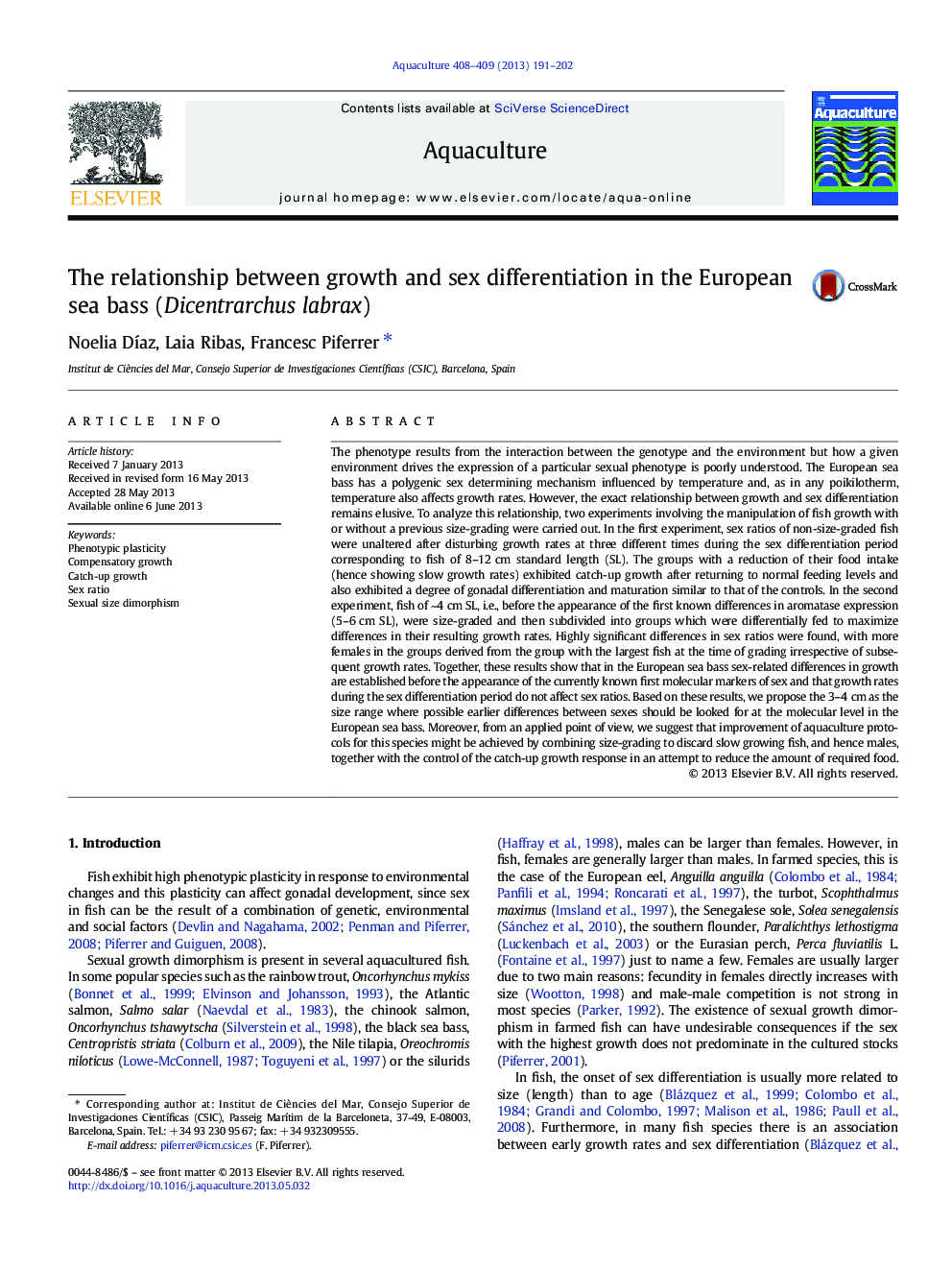| کد مقاله | کد نشریه | سال انتشار | مقاله انگلیسی | نسخه تمام متن |
|---|---|---|---|---|
| 8495558 | 1552869 | 2013 | 12 صفحه PDF | دانلود رایگان |
عنوان انگلیسی مقاله ISI
The relationship between growth and sex differentiation in the European sea bass (Dicentrarchus labrax)
دانلود مقاله + سفارش ترجمه
دانلود مقاله ISI انگلیسی
رایگان برای ایرانیان
کلمات کلیدی
موضوعات مرتبط
علوم زیستی و بیوفناوری
علوم کشاورزی و بیولوژیک
علوم آبزیان
پیش نمایش صفحه اول مقاله

چکیده انگلیسی
The phenotype results from the interaction between the genotype and the environment but how a given environment drives the expression of a particular sexual phenotype is poorly understood. The European sea bass has a polygenic sex determining mechanism influenced by temperature and, as in any poikilotherm, temperature also affects growth rates. However, the exact relationship between growth and sex differentiation remains elusive. To analyze this relationship, two experiments involving the manipulation of fish growth with or without a previous size-grading were carried out. In the first experiment, sex ratios of non-size-graded fish were unaltered after disturbing growth rates at three different times during the sex differentiation period corresponding to fish of 8-12Â cm standard length (SL). The groups with a reduction of their food intake (hence showing slow growth rates) exhibited catch-up growth after returning to normal feeding levels and also exhibited a degree of gonadal differentiation and maturation similar to that of the controls. In the second experiment, fish of ~4Â cm SL, i.e., before the appearance of the first known differences in aromatase expression (5-6Â cm SL), were size-graded and then subdivided into groups which were differentially fed to maximize differences in their resulting growth rates. Highly significant differences in sex ratios were found, with more females in the groups derived from the group with the largest fish at the time of grading irrespective of subsequent growth rates. Together, these results show that in the European sea bass sex-related differences in growth are established before the appearance of the currently known first molecular markers of sex and that growth rates during the sex differentiation period do not affect sex ratios. Based on these results, we propose the 3-4Â cm as the size range where possible earlier differences between sexes should be looked for at the molecular level in the European sea bass. Moreover, from an applied point of view, we suggest that improvement of aquaculture protocols for this species might be achieved by combining size-grading to discard slow growing fish, and hence males, together with the control of the catch-up growth response in an attempt to reduce the amount of required food.
ناشر
Database: Elsevier - ScienceDirect (ساینس دایرکت)
Journal: Aquaculture - Volumes 408â409, 15 September 2013, Pages 191-202
Journal: Aquaculture - Volumes 408â409, 15 September 2013, Pages 191-202
نویسندگان
Noelia DÃaz, Laia Ribas, Francesc Piferrer,